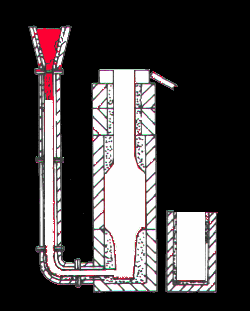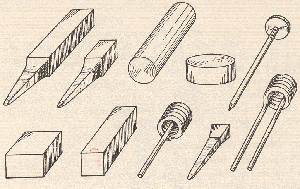|
Chilled Cast Iron:
When localized area of a gray cast iron is cooled very rapidly from the melt, cast iron is formed at
the place that has been cooled. This type of white cast iron is called chilled iron. A chilled iron
casting can be produced by adjusting the carbon composition of the white cast iron so that the normal
cooling rate at the surface is just fast enough to produce white cast iron while the slower cooling
rate below the surface will produce gray iron. The depth of chill decreases and the hardness of
the chilled zone increases with increasing carbon content.
Chromium is used in small amounts to control chill depth. Because of the formation of chromium carbides,
chromium is used in amount of 1 to 4 percent in chilled iron to increase hardness and improve abrasion
resistance. It also stabilizes carbide and suppresses the formation of graphite in heavy sections.
When added in amounts of 12 to 35 percent, chromium will impart resistance to corrosion and oxidation
at elevated temperatures.
Fast cooling prevents graphite and pearlite formation. If alloys such as nickel, chromium, or molybdenum
are added, much of the austenite transforms to martensite instead of pearlite. The hardness of chilled
cast iron is generally due to the formation of martensite.
Chilled cast iron is used for railway-car wheels, crushing rolls, stamp shoes and dies, and many
heavy-duty machinery parts.
|
 趁碍林炼过
趁碍林炼过
 趁陛
趁陛